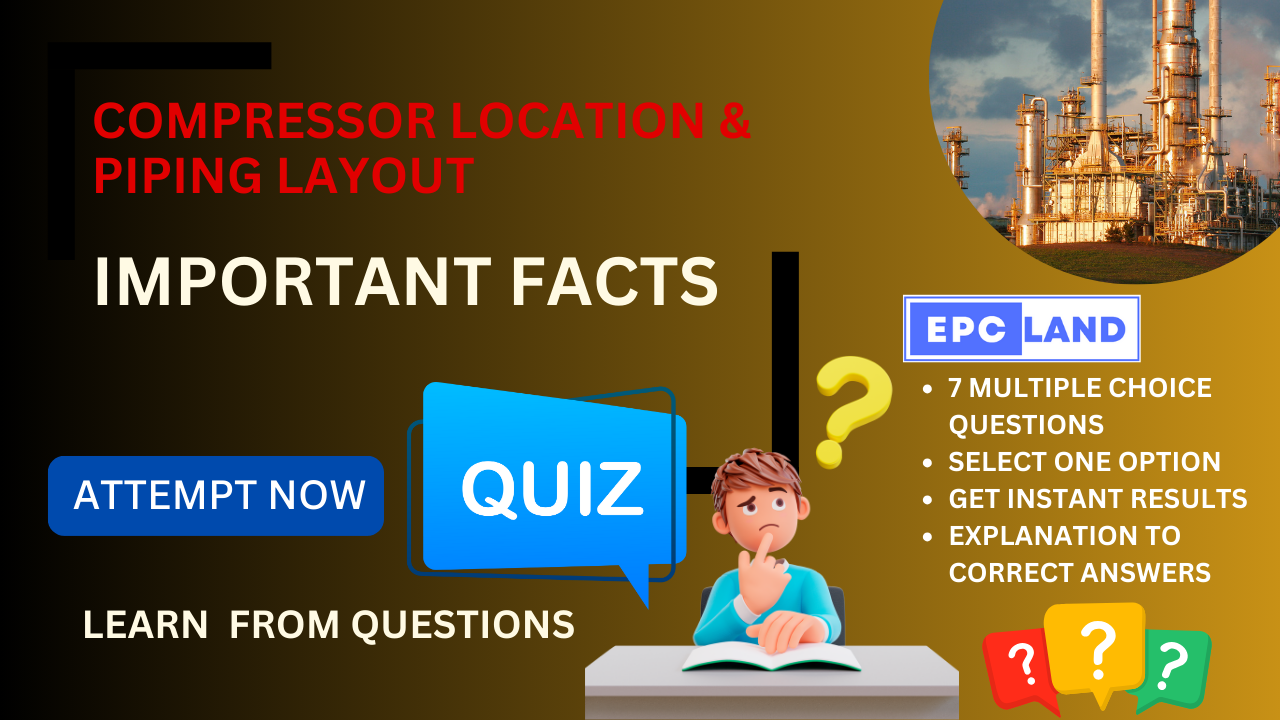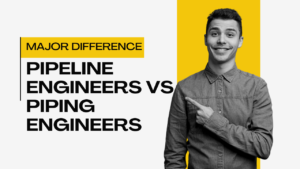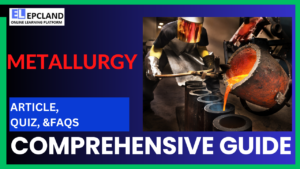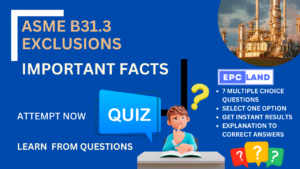1. Axial Vibration Prevention in Compressors Piping Layout
How should the piping to and from reciprocating compressors be handled to prevent axial vibration in Compressors Piping Layout?
Explanation: The piping to and from reciprocating compressors should be clamped to prevent axial vibration.
2. Access for Cleaning and Inspection
What should the piping design provide access for concerning the intake piping from the outlet flange of the first major vessel to the compressor flanges?
Explanation: The piping design should provide access for chemical or mechanical cleaning and inspection of the intake piping from the outlet flange of the first major vessel to the compressor flanges.
3. Maintenance Access for Reciprocating Compressors
How should piping close to reciprocating compressors be arranged to facilitate maintenance access?
Explanation: Piping close to reciprocating compressors shall be arranged to allow maintenance access to both sides of all cylinders.
4. Location of Suction and Discharge Headers
Why should suction and discharge headers and branches be located properly?
Explanation: Suction and discharge headers and branches shall be located to permit installation of restraints.
5. Dead Ends in Compressor Headers
According to the Piping Layout Basis, what should be avoided in compressor discharge or suction headers?
Explanation: Dead ends of compressor discharge or suction headers should be avoided.
6. Support of Compressor Piping
What should not be used to support suction, interstage, and discharge headers and all piping between headers for compressors?
Explanation: The suction, interstage, and discharge headers and all piping between headers should not be supported, guided, or attached to any portion of the building or shelter for the compressors.
7. Atmospheric Air Compressor Intakes
What protection should atmospheric air compressor intakes have according to the Piping Layout Basis?
Explanation: Atmospheric air compressor intakes should have weather protection hoods, and the inlet opening shall be protected with a wire screen of 1/2 inch (13 mm) mesh size made of 1/8 inch (3 mm) wire.
Table of Contents
Don’t miss the Course on Effective Isometrics Management: Check Now
Enrollment Link
Recommended courses (Published on EPCLand)
- Complete Course on Piping Engineering
- Basics of Piping Engineering
- Piping Layout Engineering
- Piping Material Engineering
- Piping Stress Analysis
- Material Requisitions
- Piping Material Specifications
- Valve Material Specifications
- Plant Design & Layouts-OISD 118
- Isometric Management
Library of Technical Articles
Don’t miss out the collection of 15+ articles on following topics:
- Basics of Oil and Gas Industry
- Valves
- Testing
- Tank
- Piping Bulk Items
- Pipe
- Metallurgy
- Piping Materials
- Layout
- Instrumentation
- Heat Exchanger
- Type of Contracts
- Codes and Standards
- ASTM Standards
- Articles on Piping Specialty Items
Video details of Complete Course on Piping Engineering
Why Enroll in the EPCLand
Proven Track Record– PTR
Activities & Achievements before launching EPCLand
- Published more than 50+ short courses
- 3000+ Enrolments
- More than 3,500,00 Minutes of watch hours in the last 2 years
- 4000+ Students in 100+ Countries
- Rating of 4+ out of 5
- 1000+ YouTube Videos
- 8K+ Subscribers
What Students will Learn
- Codes & Standards of the Energy Sector
- Piping Material Engineering
- Piping Layout Engineering
- Stress Analysis
Interesting facts
- All the published courses have been developed by Industry Experts with more than 2 decades of experience
- Content is based on Practical experience and real-time problems.
- Content is designed and organized in such a manner that it can be easily grabbed.
- Complete website, Blogs and Quiz sections are Planned, Designed and published by myself (About me: Atul Singla)
- Complete flexibility of Time & Location, Students can access the content from anywhere & anytime
- Moreover, once enrolled, the content can be access as many times as you want, which helps in understand the fundamentals in a better way.
Conclusion
In conclusion, our courses are meticulously crafted by industry experts with over two decades of hands-on experience. The content is rooted in practical knowledge, addressing real-time problems. The material is thoughtfully designed and organized for easy comprehension. Every aspect, from the website to blogs and quizzes, has been planned, designed, and executed by Atul Singla, ensuring a comprehensive and seamless learning experience. With the flexibility of accessing the content at any time and from any location, students have the freedom to learn on their terms. Furthermore, enrollment grants unlimited access, allowing learners to revisit the material as often as needed, fostering a deep understanding of the fundamentals.



